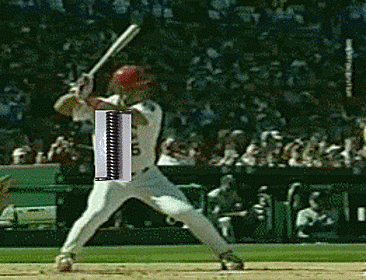I came across this video and wondered if anyone else has watched it and had any thoughts. I agree with the idea that we are utilizing the upper half of our bodies to create stretch in the fascia of our muscles or what he calls it as our "springy X pattern." More specifically, when I load the upper half, I feel more of a stretch in my lead-arm side's lat. I also believe that most here agree that when a batter does " the move," that it is an absolute that we don't turn or rotate our bodies so that our back knee causes our lower leg to externally rotate. IOW, the back knee should basically remain static. At the 4:10 mark he talks about the Goldilocks Golden rule meaning we shouldn't go too far back or not at all but then he states that he would rather have "my hitters load their springy tissue this way," with a neutral hip position. So again, I agree with the statement that we shouldn't go too far back or not do it at all, but what about creating separation with the lower half? There has to be a stretch between the upper and lower halves.
I don't see how one creates this with loading the top half exclusively. Isn't true that we are creating a powerful swing from the ground up starting with our lower half?
Looking at Noontime's GIFs, I see that most hitters do show the pitcher their back pocket during the sequence. Video evidence doesn't support the idea that the majority of HL hitters have a quite lower half that I think is being taught in the video. I did find some clips though that show some great hitters without a pronounced or barely noticeable turn in their hips. So is the IR (front side) and showing the back pocket (lower half) an absolute or hitting style? Are Harper and others below a part of the "Biggest Lie in Hitting?"
Examples of showing the back pocket:
Title is wrong as this is Evan Longoria.
[video]https://media.giphy.com/media/kjm7V6sDmVsIM/giphy.gif[/video]
David Wright
https://media.giphy.com/media/s2PBDpRZrHEg8/giphy.gif
Miguel Cabrera
https://media.giphy.com/media/kwnIcoSixGfQI/giphy.gif
Bryce Harper
https://media.giphy.com/media/xT4uQsF9a28gS908NO/giphy.gif
Examples of Not Showing the back pocket:
Will Clark
https://www.youtube.com/watch?v=0AOmyjDHVf8
Ryan Howard
https://media.giphy.com/media/73YG362XcTVcc/giphy.gif
Barry Bonds
https://media.giphy.com/media/tafPnqSiApMLC/giphy.gif





